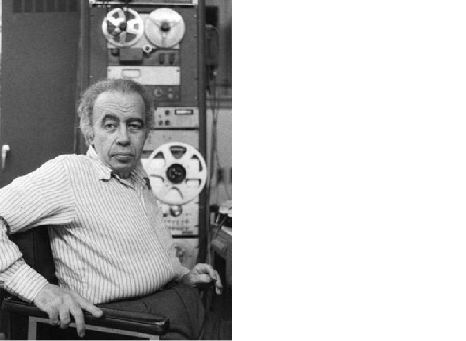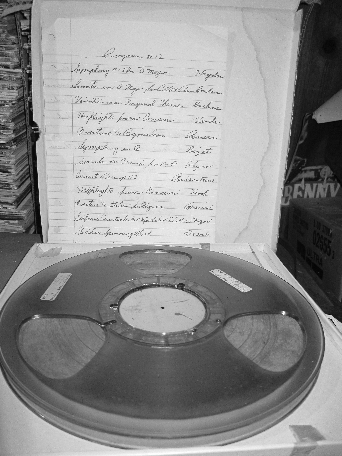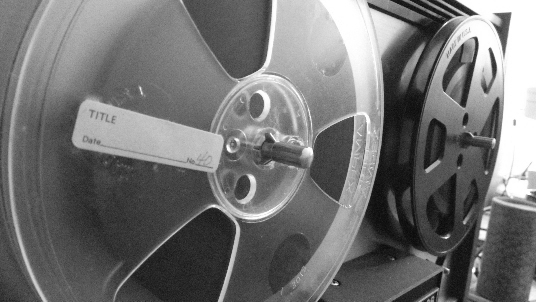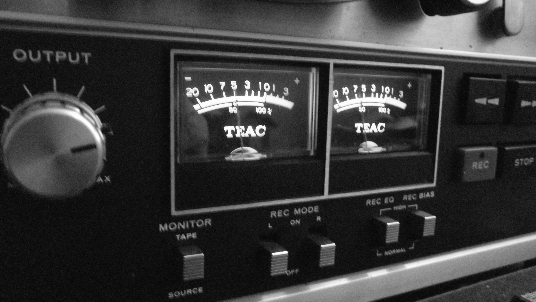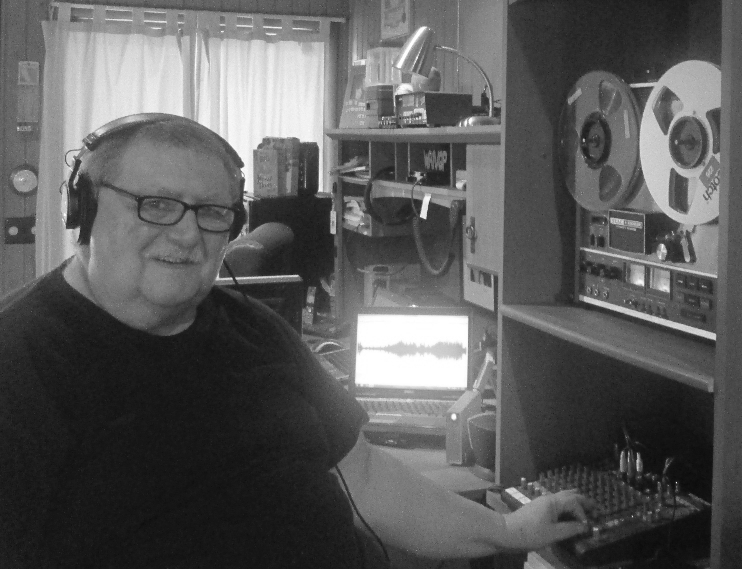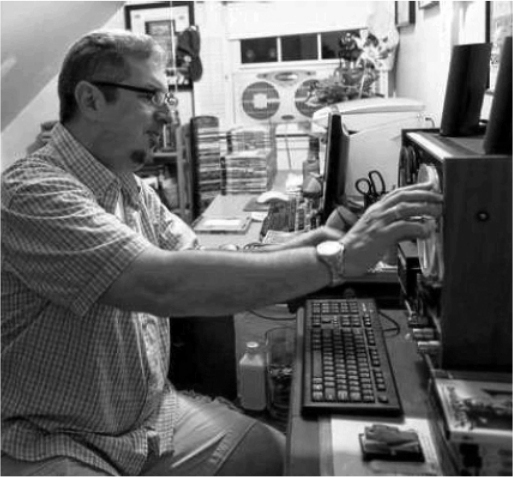Bringing Back WVCA-FM
Ken Philpot - February 7, 2016
In the weeks that followed, a plan started to emerge in terms of how to attack the sheer quantity of material these tapes could contain, most still in unknown condition.
We decided that I would handle the 10 inch reels, Bob would concentrate on the 7 inch reels. Box after box postmarked from Gloucester started to arrive soon after. What had I gotten us into?
As it turned out, miraculously, the mold on the ten inch reels was in large part superficial, and the audio was still in tact. While playing the tape the mold would often flake off to form a small pile of dust on the shelf that the tape deck resided on. Some careful listening and editing of some damaged tracks would still be needed, but on whole not bad at all. Tape heads, guides, and rollers would need cleaning after every reel!
After my 10 inch reel was inspected, Bob made his first dry run with the seven inch tapes. The results there were much the same. The audio quality still seemed usable after all these years. And so, we were out of the gate!
The next step was to define a process to get all these tapes converted into digital files. With 126 programs to record, one of the key goals was to make sure the process we decided on was efficient, leveraging technology wherever we could. In defining the work flow there were a few technical challenges at the outset that needed a fair amount of research and a healthy dose of trial and error to overcome.
Soon, things started to come together. This is how the digitization assembly line would work:
1) Recording: The actual recording would be the easy part. The open reel decks would output directly to our Windows PC's sound card line input. We would use a program called Total Recorder, which among it's many features would allow us the ability to record for a set period of time, and with the tape decks having a built in auto shut off mechanism we we could just start the recording and walk away, or go to bed for that matter. Once the tape was done playing, the tape would need to be flipped over and the process repeated again. Early on we toyed with the idea of processing the audio at the same time. But it would have added a ton of time and complexity to a part of the process which ended up taking 4 months anyway. We would have to revisit the audio quality problem later.
2) Normalizing: It was clear that there were variations in recording levels from reel to reel. Normalization (setting the loudness of a digital audio file to a specific level) of the recordings would need to be done to ensure that the sound level of every recorded program remained in the same range. To deal with this, Total Recorder, would also allow us to normalize the recordings in bulk. A big time saver.
3) Channel Splitting: Simon recorded his programs in mono. When playing back one of the tapes, one would hear a program playing in the left channel, and another program in the right channel. The idea of playing a tape four times to record all the audio was something we wanted to avoid. Finding a solution was a challenge. We initially settled on Audacity, but the process to split channels was tedious, and the software itself was a little suspect. This led us to keep searching. Eventually Bob found FFMPEG, which would allow us to split the left and right channels with a simple PC input command line. This was a huge win, because it would allow us to bulk process the files through a simple script.
4) Trimming / Editing: Here we would need to manually edit out dead air, or in some cases eliminate programming where the audio quality was too poor to use. It was time consuming but the damage to some tracks was severe.
5) Merging: The edited down files then could be merged back together into the original program, using Simon's Program notes for guidance. Trying to decipher Simon's hand written notes would be an interesting exercise.
6) Tagging: The merged program would then need "tagging" with the appropriate label such as Program 07-042. These tags would be displayed later when using the appropriate player.
And that was it... We were ready for prime time.
So the tapes started to spin, with Bob in Lowell doing the seven inch reels while I did the ten inch reels out in Ohio.
And pretty soon the first completely digitized and processed reels started to roll off the assembly line.
Four months later, all 126 Programs were complete. From there it was on to the next challenge: Creating the "Virtual WVCA-FM"
It was about this time that the reality hit us that the digitization process that had taken over four months might actually be the easy part. Sure, it was a lot of time but it was mostly just watching the reels spin and going through a zen like series of mechanics. Step and repeat.
We were now faced with the task of setting up a streaming server, and developing an audio chain that would allow all these programs to sound like people remembered them. That was the goal: To replicate people's recollection of listening to Simon and his music on the radio.
Streaming audio on the web is made up of multiple components:
1) Audio Source - This can really be anything - Line in programming, or software, such as WinAmp, Windows Media Player, or something higher end like SAM.
2) Audio Processor - This software is used to make the audio sound better. In many cases audio compression is needed to balance out the highs and lows. This is especially true with Classical music.
3) Digital Signal Processor (DSP) - This software takes the audio source and converts it into a consumable stream. There are several apps out there, such as WinAmp DSP Plug, BUTT, and EdCast
4) Streaming Server - This is the software that broadcasts the stream. The main players in this space are Shoutcast and Icecast.
5) Streaming Aggregator - This is a service which takes the stream, and makes it consumable for many listeners. There are many providers out there, such as Shoutcast and ShoutCheap to name a few.
I had set up streaming servers before but it is not my forte'. I know enough to get myself in trouble and where to go for help. I'm basically an analog audio engineer. Bob is the the part of the team that understands all this digital stuff. So I tried to pass along to him what little I could on streaming which he took and ran with. Meanwhile I would be busy working on post production audio / getting the tracks back to broadcast quality.
The audio processing would have to take place on the fly "in real time" in front of the streaming server. In principle, this isn't a big problem. In fact, it's done all the time at any radio station on your dial. Simon presumably used an audio processor of some variety on the air but he did not have to contend with the effects of all the damage years of storage had done on the tapes. We had to work with source material which was now anything but broadcast quality. We would need to compress (make the soft passages louder), limit (keep the loud passages from overloading the streaming server and cause distortion), noise gate (selectively remove background noise and hum from quiet passages), and equalize (balance the highs and lows in the music) and not allow audio to pass outside a tailored tonal range, which would help emulate Simon's transmitted sound. And the tough part was it had to do all this transparently without adding any distortion or other unwanted aspects of it's own to the music, all in real time, before sending the track to the server for streaming.
While we had this general knowledge as a starting point, there was still a healthy amount of trial and error that took place. Bob experimented with a number of different software packages before he settled on a platform. By the time I had a reasonable first cut at the audio processor settings, Bob had actually ginned together a functional server we could use for our first live streaming audio tests. What a team! The initial trials didn't go well. The audio needed to be tested through the server, not as a stand alone processor. We put in lots of late nights streaming between Ohio and Massachusetts, making adjustments and refining the settings. Eventually we prevailed.
We hope you will like the results of our efforts.
From the first e-mail I got from Henry back on 6/11/15 until today's launch date, 2/14/16 it had taken exactly eight months and three days to put Simon back on WVCA.
Thanks Simon for all your years of making our lives a little richer.
Welcome back to Gloucester!
